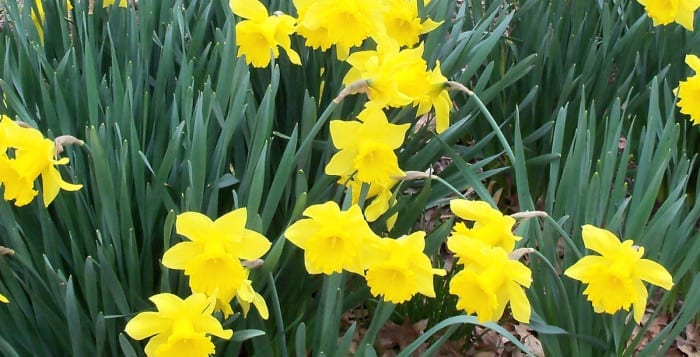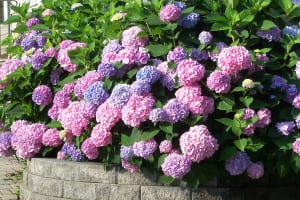Feeding your hungry plants

By Ellen Barcel
Many years ago, someone in a class I was teaching on hydrangeas asked me, “You mean, you have to feed your plants?” besides controlling the soil pH. I was surprised. Yes, I told her. You have to put nutrients into the soil if you want most plants to grow and thrive. This is particularly important with Long Island’s sandy soil, which has little in the way of nutrients in it especially if you have little or no nutrient-rich topsoil.
So, how do you do this? Well, one of the easiest is to keep a compost pile and to apply compost liberally to your plants. Another is to use a fertilizer available in garden centers, some are organic and some are chemical. But, what exactly are you adding to your soil and therefore plants?
There are three main nutrients plants need: nitrogen (N), phosphorus (P) and potassium (K). All three are needed for photosynthesis, that is, turning solar energy into plant matter.
Nitrogen helps with plant growth, encouraging leaf and stem growth. Too much nitrogen and plants will produce lots of leaves but little fruit. Legumes are nitrogen fixing plants, that is, they get their nitrogen from the air. Nitrogen fixing plants include peanuts, peas, bush beans, wisteria and clover. Note that many people try to get rid of clover in their lawns, but clover puts nitrogen into the soil naturally. Besides they have pretty little flowers.
Phosphorus encourages rapid growth, blooming and root growth while potassium helps in the fruit quality and reduction of plant diseases as well as overall plant vigor and pest resistance.

You may see on chemical fertilizer packages numbers like 5-10-5. This means that the fertilizer contains 5 percent nitrogen, 10 percent phosphorus and 5 percent potassium. The rest is other nutrients and fillers. A package that says 10-20-10 is therefore 10 percent nitrogen, 20 percent phosphorus and 10 percent potassium. A complete fertilizer will have all three of these nutrients.
But there are also secondary nutrients that plants need including calcium, magnesium (part of chlorophyll in green plants), sulfur (improves root growth and seed production) as well as micronutrients. Lack of enough iron, for example, and the plant’s leaves will turn yellow.
A well-balanced commercial fertilizer will have all of these nutrients and micronutrients. If you are concerned that your soil, even amended with compost and/or fertilizer has the proper nutrients, there are test kits available in garden centers that will tell you how well your soil is doing. Or you could bring samples to Cornell Cooperative Extension, which will test for a wide variety of nutrients.
Soil pH is not a nutrient but a measure of how acidic or how alkaline soil is. Different plants need different soil pH levels to grow to their best potential. Normally, fertilizer will not contain any chemicals to change the soil pH, unless they specifically say so. For example, Miracid is a fertilizer that contains a chemical that will lower the soil pH. It should not be used on plants that require a neutral or alkaline soil, but on plants like rhodies, blueberries, pines etc., which thrive in an acidic soil.
If you are using potting soil for container gardens, read the package carefully. It will indicate whether it has any fertilizer in the soil and, if so, what and how much. It should also indicate how long the nutrients will last. Some even have watering crystals that hold excess water to be released when the soil itself dries out. Watering crystals will not last forever and may need to be replaced. Again, read the label.
The directions with chemical fertilizers will sometimes talk about foliar feeding, that is, mixing up liquid fertilizer and spraying it directly on the leaves of plants. First, chemical fertilizers in general can burn plants if applied too liberally. Always follow the package directions to avoid this. Second, it’s been my experience that foliar feeding can sometimes burn the leaves of the plants, killing them.
As a result, I never spray liquid fertilizer on plant leaves. If you decide to use slow-release plant food (sticks, granules etc.), note how much is to be applied to a given area, pot size etc. If you overdo it, you can kill your plants. If a little is good, a lot is definitely not better. This is one reason why I prefer to use compost, since it’s virtually impossible to burn plants with compost. I’ve even seen volunteers growing directly in compost piles.
Ellen Barcel is a freelance writer and master gardener. Send your gardening questions to [email protected].






